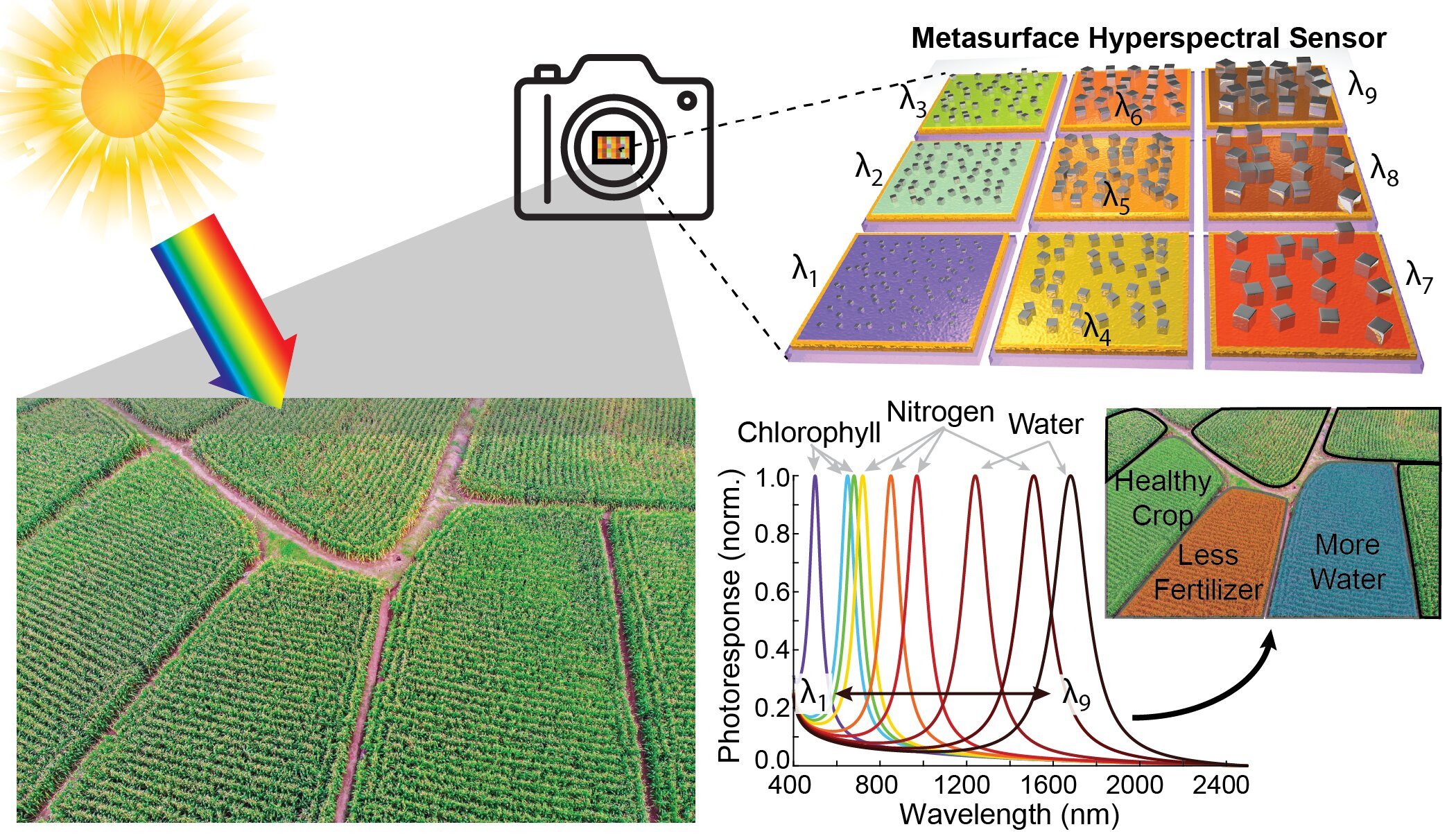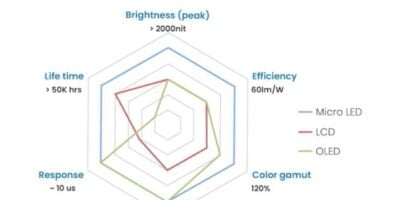

Plasmonics to boost pyroelectric-based hyperspectral sensing
Commercial photodetectors have already been designed with pyroelectric materials before, but they haven’t been able to focus on specific electromagnetic frequencies, and the thick layers of pyroelectric material needed to create enough of an electric signal have caused them to operate at very slow speeds, the researchers note. By combining them with state of the art plasmonics, the researchers have been able to make incredibly fast detectors that can also sense the frequency of the incoming light.


The size and spacing of silver nanocubes on a thin layer of
gold dictates what frequency they absorb, causing them to
heat up. A thin layer of a aluminum nitride then converts the
heat to an electric signal, which is picked up and carried by
a layer of silicon semiconductor on bottom.
Credit: Jon Stewart, Duke University.
The plasmonic detectors consists of nano-sized silver cubes, whose distance from a gold base layer determines the frequency, the amount of light absorbed being tuned through the nanoparticles’ distribution. By precisely tailoring the nanoparticles’ sizes and spacings, the researchers can make the system respond to any electromagnetic frequency they want, from 660 to 2,000nm.
What’s more, the plasmonic layer traps so much energy that it generates enough heat to be rapidly detected by even a thin layer of aluminium nitride as the pyroelectric material. According to the researchers, the previous record for detection times in any type of thermal camera with an on-chip filter, whether it uses pyroelectric materials or not, was 337 microseconds. The new plasmonics-based approach sparked a signal in just 700 picoseconds, which is roughly 500,000 times faster.


to specific frequencies of light to detect the various needs of
a crop field. Credit: Maiken Mikkelsen & Jon Stewart,
Duke University.
In a paper titled “Ultrafast pyroelectric photodetection with on-chip spectral filters” published in Nature, the researchers anticipate that a 6ps rise time could be achieved, on part with that of semiconductor photodiodes.
使用这种技术,作者展示了佛ur individual photodetectors tailored to wavelengths between 750 and 1900 nanometers. Creating large-area, inexpensive gigahertz pyroelectric detectors for wavelength-specific hyperspectral cameras would only be a matter of patterning a grid of tiny, individual detectors, each tuned to a different frequency of light, into a larger ‘superpixel’.
Duke University –www.duke.edu
related articles:
Researchers shrink hyperspectral imaging with metasurface optics
MEMS optical filters give Iphone’s camera hyperspectral powers
Opinion: the hyperspectral era has already begun
IMEC hyperspectral image sensor exceeds 140 bands
The future of video surveillance: HD, hyperspectral and stereoscopic






